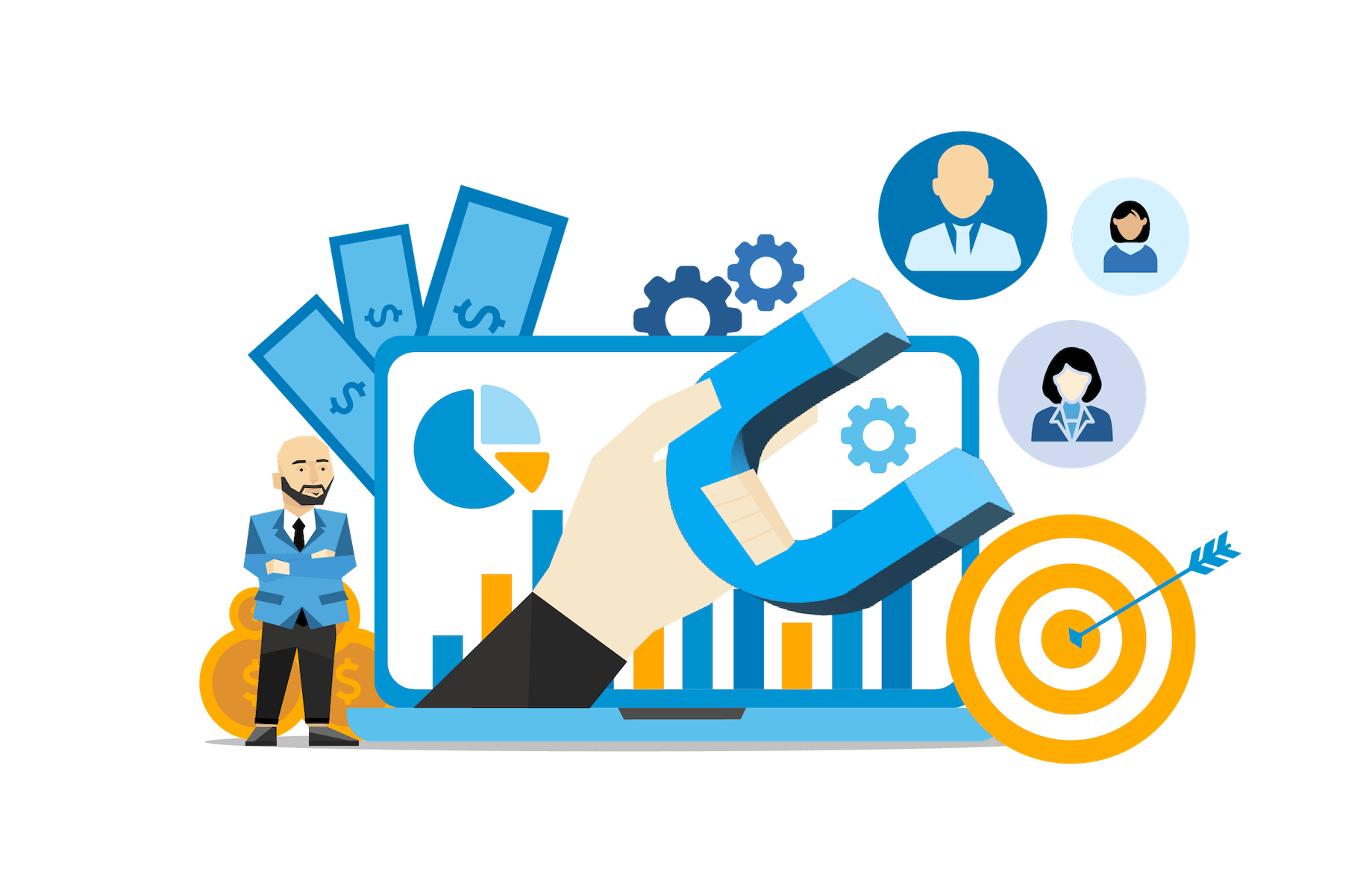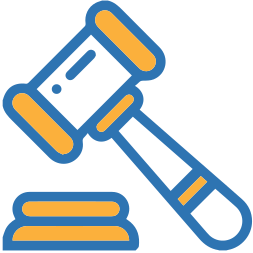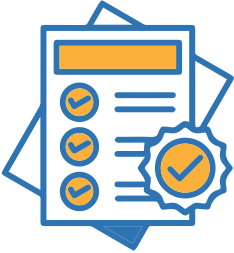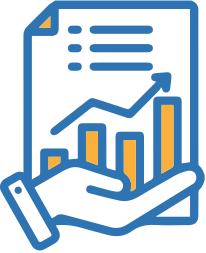Generate More Leads Through Conversion Rate Optimization
It is common for businesses to focus the bulk of their marketing strategy on attracting visitors to their website. While finding ways to increase web traffic is critical to a successful inbound strategy, the traffic you generate won’t be useful if those visitors aren’t turning into leads and customers. If you can’t convert your visitors, then you won’t be able to engage with them or nurture them in a meaningful way, which is why it’s so important to optimize website content for conversions.
Your conversion rate tells you the percentage of website visitors that complete a desired action on your website. If you have a low conversion rate, improvement can be achieved by implementing a conversion rate optimization strategy whereby the website experience and certain elements will be analyzed and tested iteratively to achieve more of the desired results.
What Are The Benefits Of Focusing On Conversion Rate Optimization?
There are many metrics you can monitor that can help identify the reason behind low conversion rates, including individual page conversion rates, click-through rates, average session duration, pages per session, time on page, returning visitors, and more. Monitoring these numbers will help to improve your decision making when it comes to enhancing your website and identifying what tactics are working and what tactics aren’t.
If the numbers for these metrics are low, then they can help you figure out what needs to be optimized to improve your conversion rates. For example, if you notice that a page with a low conversion rate also has a high exit rate, it could be because the page isn’t engaging visitors properly or that it’s not providing visitors with direction on what action to take. Optimizing that page could involve adding internal links that provide added value to the content on the page as well as adding a call-to-action (CTA) linking to a relevant offer.
Not only could such adjustments improve your ability to convert visitors to leads, but it will improve the overall user experience. Your visitors will be more engaged, which means that even if they don’t convert on that page, the chances increase that they will convert on another page.
Conversion rate optimization not only aims to improve the rate of conversion but also to enhance the level of engagement a website visitor has with the contents. Besides the obvious effect it has on your potential leads, this type of engagement will be factored into your page rankings by Google, which, in turn, can help attract even more visitors with better search engine results rankings.
Common Website Conversion Point Roadblocks
It’s important that you know what some of the common issues are that prevent visitors from taking action and converting into leads. Understanding the common website conversion point roadblocks will not only allow you to identify why your conversion rates are low, but it will also allow you to take measures to prevent subpar conversion rates. Here are a few of the common roadblocks that prevent visitors from converting:
Poor Or Irrelevant Content
The importance of posting high-quality content to your website can never be overstated. If the content is poorly written or not helpful to the visitor, it will reflect poorly on your brand. They will immediately have doubts about your ability to deliver a high-quality product or service if your content isn’t good. Not to mention that if they don’t trust you, they won’t provide you with their personal information. Secondly, if the content isn’t relevant to their needs, then they will not be engaged and there will be no incentive for them to convert.
Poor Messaging
The identity of a company is fostered through its messaging. If your messaging is poor, then visitors are going to have a difficult time trying to figure out who your company is, what it stands for, and what it has to offer that will help meet their needs. Focusing on a simple message and making sure you’re consistent in delivering that message across all channels is so crucial to your marketing strategy in general. And your message has to stand out from the pack. It has to be compelling. If it doesn’t draw visitors in, it will be difficult to generate interest or engagement, making it hard to convert.
Needs Are Not Being Met
A good content strategy is one that provides content for visitors at every stage of the buyer’s journey. If you don’t have content addressing each stage, then some of your visitors may find that your content isn’t providing them with the information that they’re looking for at their current stage. Converting these visitors will subsequently become a significant challenge.
Technical Problems
Technical issues can be a huge barrier to conversions. If the conversion rate of a page seems abnormally low, it may be the result of a technical obstruction. For example, if you notice that you’re getting a high click-through-rate on a blog post, but the conversion rate on the landing page is practically non-existent, it could very well be a technical problem. Common technical issues that prevent conversions include:
- The page loads too slowly – Visitors will only give a page 2 to 3 seconds to load before leaving a page.
- The page won’t load at all – The link is broken leading to an error page or the page is stuck trying to load without ever loading.
- Form errors – There’s an error with the form preventing visitors from filling it out or submitting it.
The Ask Doesn’t Match The Offer
The properties of the forms that you’re requesting your visitors fill out can prevent them from converting. This can happen if what you’re asking for doesn’t match what you’re offering. If you’re providing a top-of-the-funnel offer, then requiring a visitor to submit detailed, business or personal information, you’re asking for too much. Visitors will not be comfortable providing extensive information to you that early on in their journeys. Nobody wants to provide a phone number in return for a general ebook, for example.
Craft your forms based on the offer. If it’s a top-of-the-funnel offer, simply ask for a few pieces of basic information, such as their name and email address. You can ask for more specific information further down the funnel. At this point, people will understand that more information will be required from them. For example, a free software trial can require a bit more information.
Ways To Improve Conversion Rates
Although a big part of a successful conversion rate optimization strategy involves being able to identify and address conversion point roadblocks, addressing existing conversion issues shouldn’t be the only focus. Implementing the best practices will help prevent conversion point roadblocks, to begin with as well as improve your website’s ability to convert visitors in general. Improving conversion rates can be simple by just following these effective methods:
Optimize Landing Pages
Simply because someone has clicked on your CTA does not mean that they will automatically convert. They can still change their minds once they’ve reached your landing page, which is why the landing page is so vital to the actual conversion process. A good landing page should reinforce the message that was relayed in the CTA and should encourage the visitor to fill out your form and complete the offer. You should optimize your landing pages to do just that by keeping your content focused on the offer, matching your CTA’s offer and language, using social proof to increase trust, and making sure that the form is easy to spot.
Optimize CTAs
The CTA is what directs the visitor to the action they should take. It’s the driving force of your conversions. A good CTA should be relevant to the content the visitor just consumed and should provide an offer that’s relevant to that content (and to the stage of the buyer’s journey that content is meant for). In addition to linking to a relevant landing page where the visitor can obtain their offer, you should also use language to help encourage them to click on the link. This means briefly mentioning how the offer will address their needs and using urgent language to encourage them to click on your link right away.
Be sure that the visitor can clearly see your CTA. Consider making it a colored button that will stand out from the rest of the content on the page. You should also use heat maps to identify where on the page visitors tend to be most engaged. It’s in these spaces that you may want to position the CTA to ensure it receives the most exposure possible.
Optimize Forms
If a visitor has made it to the landing page, then all they need to do to convert is to fill out your form. Optimize your forms to encourage visitors to complete them in their entirety. Try to avoid having too many fields, especially for offers at the top of the funnel. The most important fields should be near the top of the form and the look and layout of the form are important too. Keep it clean and simple so that it’s easy to read and scan. In some cases, you can make the forms easier to fill out by enabling one-click submits using Facebook, Google SSO (single sign-on) or pre-populated fields when information may already be known.
Optimize PPC Ads
PPC ads are an excellent way to drive conversions since you can attract visitors who are already near the bottom of the sales funnel. You will want to optimize your PPC ads to ensure that they get click-throughs when they show up. Create unique headlines that clearly deliver your message, write ad copy that highlights what your offer is and how it will benefit your customers and include visual content that draws the eye. It’s also important that you use relevant keywords and landing pages that match the offer and language of your ad.
Optimize for Mobile Use
According to a WARC (World Advertising Research Center) study, almost 75 percent of all Internet users will be solely using their smartphones to access the web by 2025, so make sure your website is optimized for mobile use. If it’s not, you’ll diminish the mobile user experience, driving away visitors who may have converted otherwise. Optimizing for mobile use includes using responsive web design to ensure your site is properly displayed on mobile devices, avoiding elements that can slow down your website speed (such as videos that auto-play or images that are too big), making navigation simple, minimizing pop-ups, and using CTA buttons instead of text links.
Use A/B Testing
A/B testing allows you to test different elements against one another to determine which have a bigger impact on your conversion rates. For example, you can test two landing pages that are exactly the same but have different headlines or that have the form positioned on a different part of the page. By identifying the best performing elements, you can make sure that you optimize future pages using those findings. A/B testing can be done on everything from your landing pages and CTAs to your PPC ads.
Optimize Website Experience (UX/UI)
The better your user experience is, the easier it will be to keep visitors on your website, which will increase your chances of keeping them engaged and, eventually, converting them. To ensure excellent user experience, make sure that there are no technical issues, such as broken links or slow loading speeds. Focus on providing a website that has a user-friendly UI, one that is easy for visitors to scan your pages and easy for them to navigate from one page or section to another. Adding a search bar will help visitors find exactly what they’re looking for, which can help guide them to an effective conversion point that much quicker.
Add A Chat Feature To Your Website
A chat feature can be very useful in driving conversions for two reasons: it allows you to engage visitors right away and it allows you to provide your visitors with guidance when they need it. Such support can help to increase trust as well, which can go a long way towards convincing a visitor to convert.
Align Offers To Context
No matter the offer, it can’t feel random or out of place to a website visitor and it should match the context of the page it’s located on. You need to assume that the reader’s interest lies in the subject matter of the content they’ve just consumed, and the best way to convert them is to provide an offer that’s relevant to that content.
Conversion Rate Optimization Drives Results For Marketing & Sales
Generating awareness and attracting new visitors to your website is an incredibly important part of your marketing strategy. It doesn’t however, end there. Make sure that your visitors are able to find what they’re looking for and encourage them to ‘raise their hand’ by converting on your offers, no matter what part of the sales funnel they’re in.
Implement a conversion rate optimization strategy to focus on optimizing your website for more conversions and to monitor your conversion rate so that you can address potential conversion point roadblocks. While optimizing your conversion rates can require a lot of work and is a long-term strategy, if done correctly, a significant positive impact can be realized in your sales and marketing strategies.















